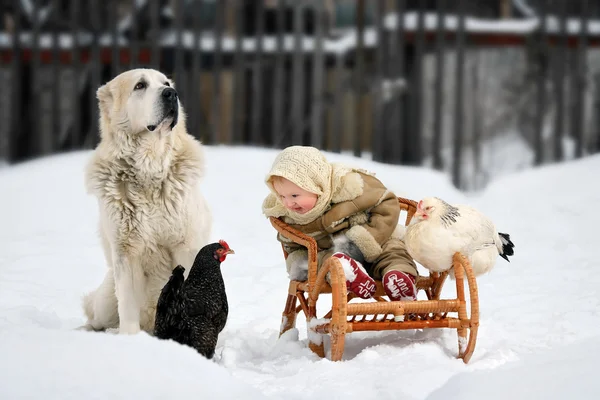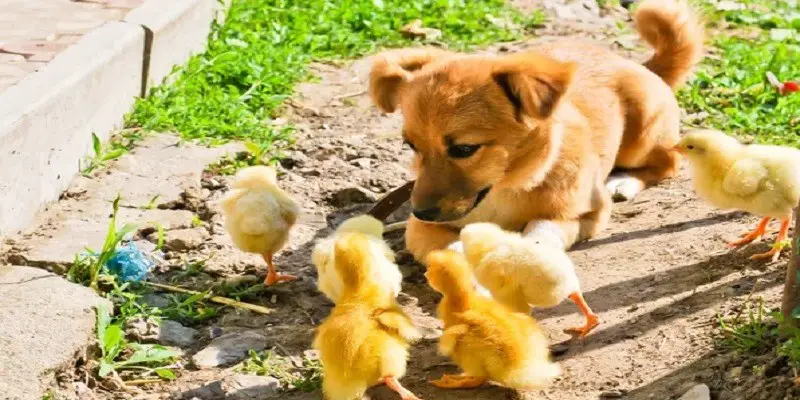Last Updated on September 27, 2023 by Pauline G. Carter
Farm animals, particularly poultry, are susceptible to a myriad of threats ranging from predators like foxes and raccoons to other inherent dangers of the farm environment. It is for this reason that many farmers and poultry keepers have employed the age-old tactic of using dogs to guard their flocks. But how do these dogs discern between a threat and the birds they are meant to protect?
Training Methods: Differentiating Threats from Flock
To ensure a dog effectively guards poultry, it is imperative that they are trained to differentiate between potential threats and the birds. This differentiation is primarily a result of:
Early Socialization: Introducing a dog to poultry early in its life has manifold benefits. Familiarity breeds a sense of responsibility, with the dog viewing the flock as part of its extended family or ‘pack’. Additionally, when young, dogs are more malleable in their behavior and can more easily adapt to and accept new members of their environment. This formative period is crucial and can determine their attitude towards poultry in their adult life.
Olfactory Association: A dog’s sense of smell is one of its most powerful senses. For perspective, while humans have about 5-6 million scent receptors, dogs have 125-300 million, depending on the breed. Leveraging this, trainers can establish a scent profile of the flock for the dog. Over time, the dog associates this scent with ‘safe’ or ‘family’, helping to quickly discern between the flock and potential threats based solely on olfaction.
Desensitization: This is a method often used in behavioral training, not just for dogs but for various animals. Slow, incremental exposure to potential distractions or threats helps the dog get accustomed to various stimuli. In the context of a farm, this could mean exposing the dog to the sounds of machinery or the sight of other animals, ensuring they stay focused on protecting the poultry amidst these distractions.
Positive Reinforcement, Corrective Actions, and Supervision
Positive Reinforcement: Positive reinforcement doesn’t just mean treats (although they’re very effective!). It’s about acknowledging the correct behaviors and actions of the dog in real-time. This could be through verbal praises, physical affection, or playtime. Dogs, by nature, are eager to please their owners, and when they understand which actions earn them rewards, they’re likely to repeat them.
Corrective Actions: When we talk about corrective actions, it’s crucial to stress that violence or overly aggressive corrections are counterproductive. Instead, actions like leash tugs, verbal cues, or time-outs can be used. The aim is to let the dog know that a particular behavior is undesirable without inducing fear.
Continuous Supervision: The initial stages of any training are formative. By continuously supervising the dog when it’s around poultry, trainers can immediately correct undesirable behaviors, and equally importantly, reward desirable ones. Over time, as trust is built, the level of supervision can be reduced.

Dealing with Common Distractions
Establish Dominance: Dogs are pack animals. Establishing yourself as the pack leader is critical to ensure that they listen to your commands, especially in high-distraction environments. This doesn’t mean being aggressive, but rather displaying a calm, assertive energy that the dog recognizes and respects.
Stay Command: This simple command can be a lifesaver. Training a dog to reliably “stay” means you can control it in unpredictable situations. Whether it’s a sudden visit from a neighboring farmer or the backfiring of a tractor, a well-trained dog should remain in place until told otherwise.
Focused Training Sessions: Just like humans, dogs can be taught to focus. By introducing distractions during training sessions and rewarding the dog for ignoring them or responding appropriately, the dog learns that even amidst chaos, its primary task (protecting the poultry) remains unchanged.
FAQs
1. What breeds are best for guarding poultry?
Livestock guardian breeds like the Great Pyrenees, Maremma Sheepdog, and Anatolian Shepherd are popular choices. However, with proper training, many breeds can be effective.
2. How long does it take to train a dog for this task?
Depending on the breed and individual dog, it can take anywhere from a few weeks to several months of consistent training.
3. Can older dogs be trained, or is it better to start with a puppy?
While puppies often adapt quicker due to their impressionable nature, older dogs can still be trained effectively, provided they don’t have ingrained predatory habits.
In conclusion, with the right training techniques and consistent effort, dogs can be invaluable assets in protecting poultry on the farm. Their keen senses, loyalty, and natural guarding instincts can be harnessed to ensure the safety of your flock amidst myriad farm distractions.


